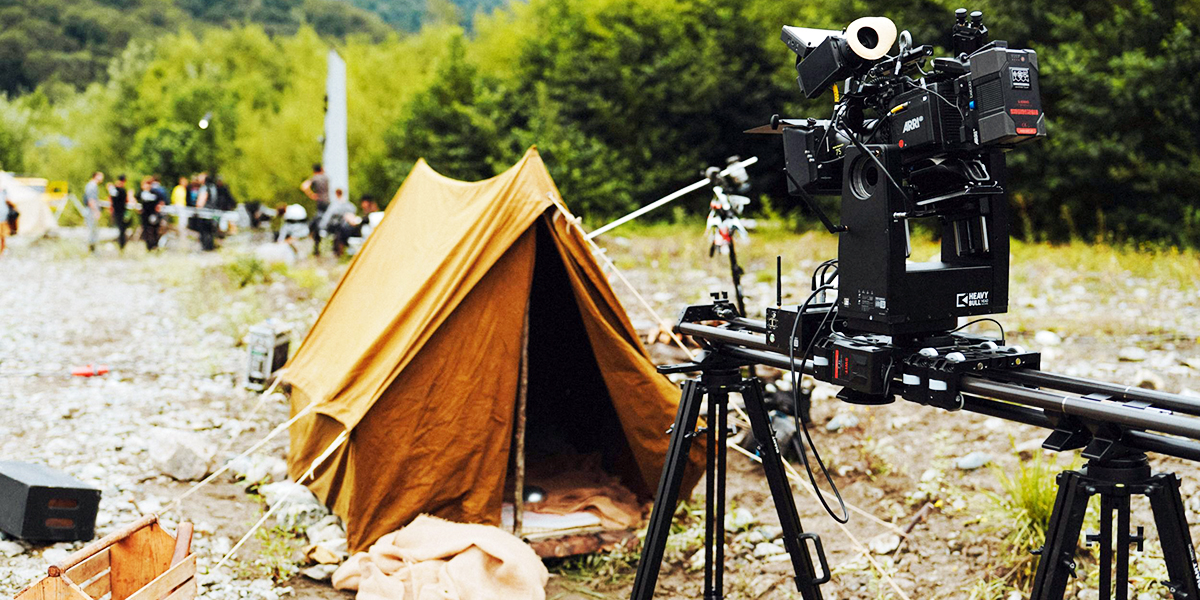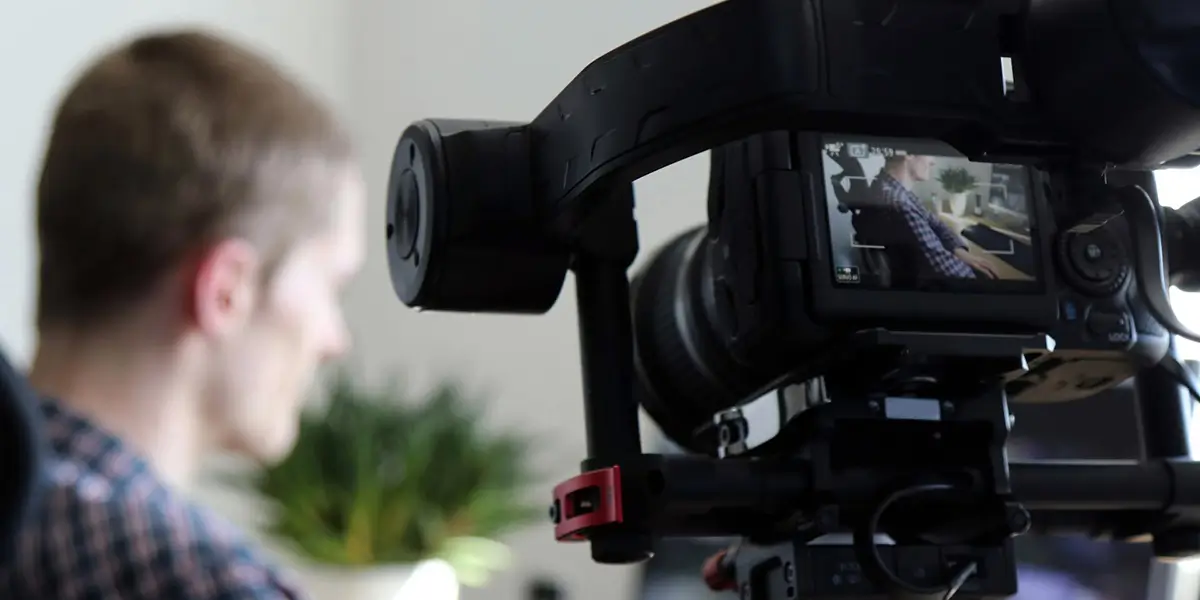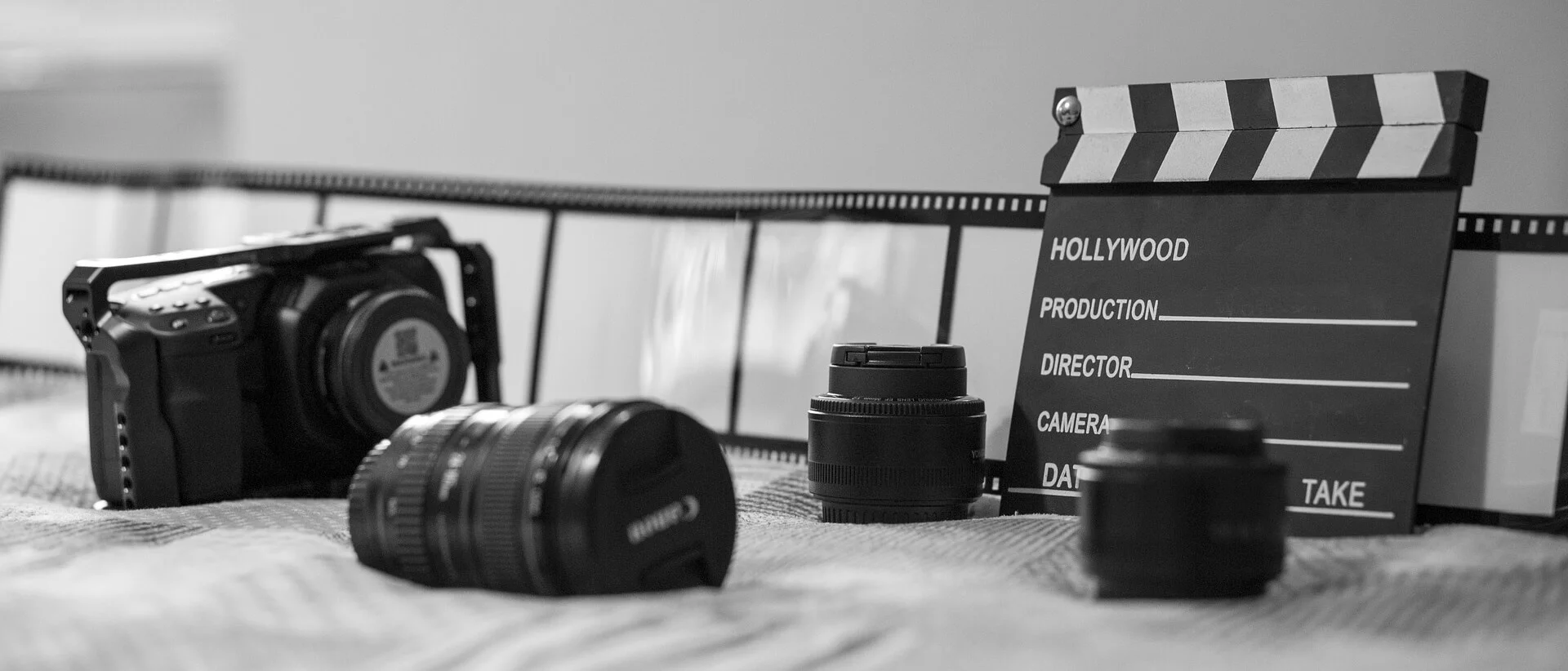Film and video production are not the same. People mix them up a lot. Films need big teams to tell stories for theaters. Video production makes useful content for businesses. Like training videos or marketing clips. These projects use smaller, faster crews.
We filmed behind-the-scenes while the production crew set up lights and camera dollies for a short scene at Universal Studios Orlando.
It wasn’t a movie, but it still needed good planning. Also, pro gear. Cameras, lights, microphones—the tools are often the same. But how film and video are made? That’s where things get different.
So, what makes them different? How many people are needed. Is there a script or not. Where it’s filmed. How much it costs. And how long it takes to finish.
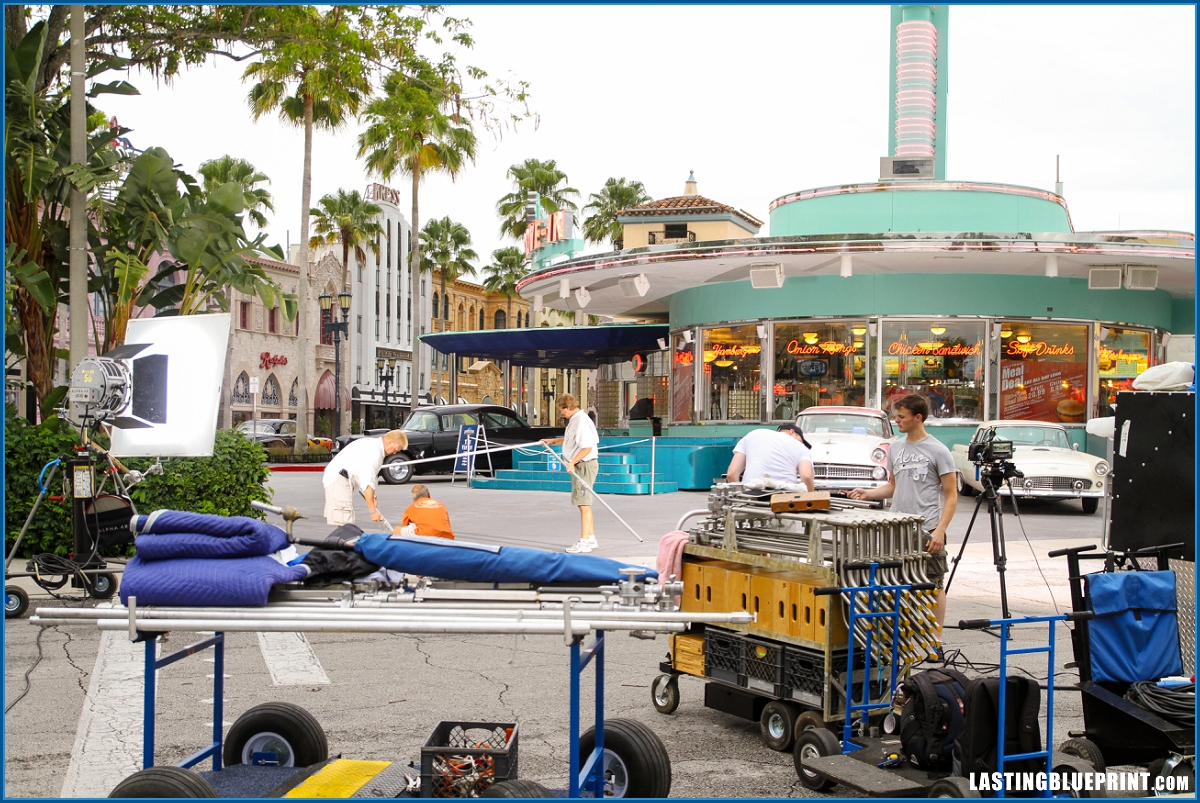
Crew Size
Film crews are large. Movie credits can last eight minutes, listing producers, directors, writers, actors, editors, and crew. For example, “Guardians of the Galaxy Vol. 3” had over 200 people on its team.
On the other hand, a single corporate videographer can handle a welcome video for a law firm.
The Script
Film scripts often get revised many times with feedback from the studio, the bosses, the writers, the people making it, the actors, and the director. For example, “Avengers: Infinity War” had a script made over a few years with many versions, but it was still being fixed when they were shooting it. But during a one our law firm video production projects, the teleprompter script was changed on set so it worked better and didn’t need a lot of people to say yes or no. This reflects how business video scripts tend to be simpler and more stable after the first draft.
Generally, film scripts focus on creative development and complexity, while business video scripts prioritize efficiency and clarity.
Locations
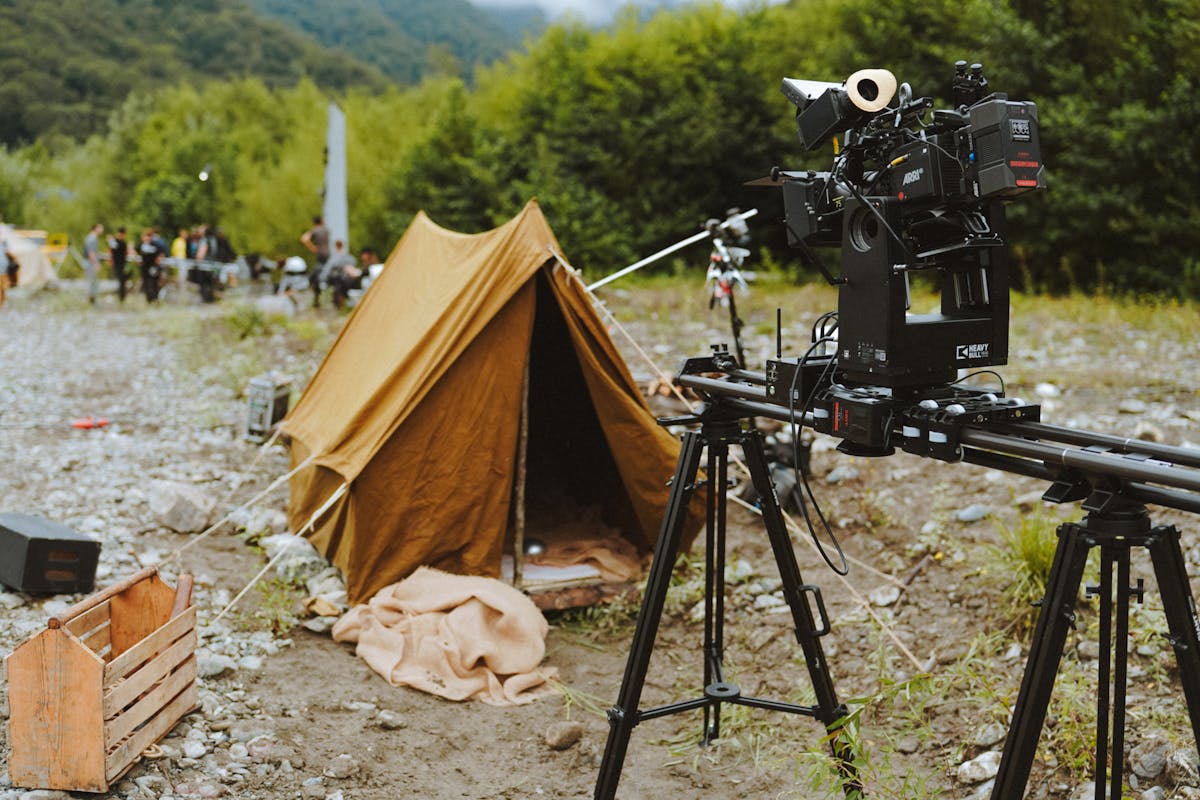
Films often require shooting in multiple locations. However, green screens, blue screens, and The Volume technology have made this more efficient compared to flying crews around the world. Most video productions, like conferences or office shoots, happen in a single location.
Target Audience
Films aim to entertain large audiences through theaters, streaming, or TV.
Video production serves specific business needs. Corporate videos support training, sales, and product demonstrations. Event videos document conferences and trade shows with authenticity. Marketing videos promote brands through social media and advertising.
Below is an example of a testimonial video we produced for a dental consulting firm. The client testimonial told a focused story about real challenges and measurable results. This type of video production delivers a clear message that builds credibility and connects with potential clients.
Shooting Medium

The medium used is a key difference. Video production companies typically involve videographers working with digital cameras like the Sony A7S III, Sony FX6, and Canon EOS C70. Movies rely on cinematographers using film cameras. Since “Star Wars: Episode II – Attack of the Clones”, the film industry has mostly transitioned to digital cinema cameras like the ARRI Mini LF and Sony VENICE. Film cameras like the ARRIFLEX 435 are becoming less common due to their higher cost and lower efficiency. Since 2017, 92% of films have been shot on digital film, even if only a little. This is seen in Oscar-winning films such as “Oppenheimer” and “Poor Things”.
Film cameras aren’t exclusive to movies—they’re occasionally used for projects like Lorde’s Green Light music video, just as digital cinema cameras are also used in film productions.
Scale
Video production projects are usually short, often around two minutes. Films, by comparison, range from 90 minutes to over two hours. Some, like “Killers of the Flower Moon,” even pass the three-hour mark. However, business projects like corporate documentaries or recorded conferences can also run several hours, depending on the scope.
Distribution Channels
Movies usually come out in theaters first. After that, they go to streaming, Blu-ray, or digital download. Some stay popular for years.
Videos are different. Most are uploaded to YouTube, Vimeo, or social media. If it’s something like an infomercial, it might also be shown on TV. Business videos are often made for short-term goals, like a campaign or an update.
Budget
Making a movie costs more. Bigger crews, longer schedules, and more things to manage push the budget up. Video production is different. It often costs less, especially for business content or event coverage. But not always. Commercials or music videos can get pricey. Most video projects, though, stay far below film production budgets.
Production Time
Films often take months or even years to complete. For example, The “Barbie” movie took four months to film; while editing by Houy and Maya Rivera, Nicholas Ramirez, and Gloria Tello took 14 months. Corporate or event videos usually take a few weeks.
Conclusion
Film and video production are different. Crew size, scripts, budgets, timelines—it all depends on the project. But there’s often overlap. Video crews sometimes work on films. Film crews also shoot business videos.
It comes down to picking what fits. Some projects need a full film setup. Others are fine with a small, fast team that gets the job done.


